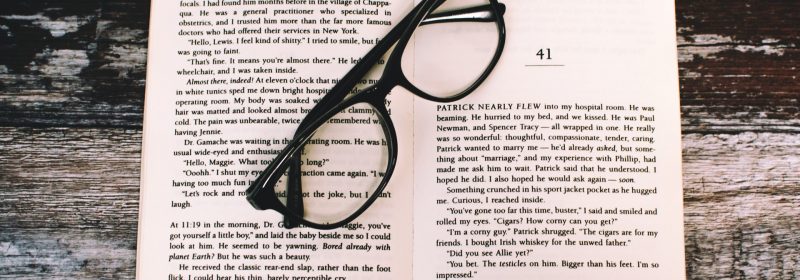
Figurative language is a form of language which is more dramatic and visual than a direct statement in everyday language. It enables you to capture your reader’s attention Figurative language employs the use of metaphors, similes, and personification to help you better convey complex and abstract ideas by attaching these abstract ideas to an image and make it more understandable. Moreover, it makes your writing pleasurable to read for the reader
Also Read:Using a Plot Diagram for Effective Storytelling
What Is Figurative Language?
Figurative language refers to turns of phrase that deviate from the ordinary meaning of the words to convey a more complicated concept colorfully and more clearly. It goes beyond the literal meaning of the words to relay its message.
When we write, we can create figurative language by employing figures of speech on our writing. While there are a plethora of figures of speechwriters can utilize, the most common use the 7 different types of the figurative language discussed in this guide.
Read on to learn what these 7 types of figurative language are, how to use them in your own writing, and examples in literature.

Get pumped! You’re going to venture into the world of figurative language and you’re going to like it!
The 7 Types of Figurative Language
1. Simile
You probably use similes on a day-to-day basis without even realizing it. It sneaks into your everyday language like a spy infiltrating a compound. See? You didn’t even notice that I used a simile in this explanation. A simile is a figure of speech that compares two dissimilar concepts using the connector “like” or “as”.
- Examples from Literature:
- “The very mystery of him excited her curiosity like a door that had neither lock nor key.” –Gone with the Wind, by Margaret Mitchell
- “Time has not stood still. It has washed over me, washed me away as if I’m nothing more than a woman of sand, left by a careless child too near the water.” –The Handmaid’s Tale, by Margaret Atwood
2. Metaphor
Similar to a simile in function, metaphors link two separate, unrelated concepts but share common characteristics as one without any connectors. We are no longer likening two things but positing that they are one and the same. This can lead to some incredibly powerful comparison and imagery, something that direct language cannot do as clearly.
- Examples from Literature:
- “The sun in the west was a drop of burning gold that slid near and nearer the sill of the world.” –Lord of the Flies, by William Golding
- “My thoughts are stars I cannot fathom into constellations.” –Fault In Our Stars, by John Green
- “If you can look into the seeds of time, and say which grain will grow and which will not, speak then to me.” –Macbeth, by William Shakespeare
Also Read: 5 Ways to Transform Your Writing Skills
3. Implied Metaphor
Metaphors can take multiple forms. While the first two examples presented above show a direct comparison, many metaphors, like the third example above, are purely implied. Take the aforementioned example below:
- Example from Literature:
- “If you can look into the seeds of time, and say which grain will grow and which will not, speak then to me.” –Macbeth, by William Shakespeare
- The “seeds of time” refer to the different moments in our lives that may or may not be significant or defining in the future. The extended metaphor of seeing which seed actually grows and which does not further imply the idea that if we could see into the future, we could spend more time on the events in our lives that do pan out and become significant and stay away from futile efforts.
- “If you can look into the seeds of time, and say which grain will grow and which will not, speak then to me.” –Macbeth, by William Shakespeare
4. Personification
Personifications attach human qualities and actions to non-human entities. This can include inanimate objects, animals, or even elements of nature. They are so commonly used in everyday language that personifications may be offended that it got fourth billing on this list. Did you catch that personification? When utilized in writing, personifications also relay strong and powerful imagery through our familiarity with human characteristics.
- Examples from Literature:
- “Because I could not stop for Death –
He kindly stopped for me –
The Carriage held but just Ourselves –
And Immortality.”
– “Because I could not stop for Death” by Emily Dickinson - “But, soft! what light through yonder window breaks?
It is the east, and Juliet is the sun.
Arise, fair sun, and kill the envious moon,
Who is already sick and pale with grief,
That thou, her maid, art far more fair than she.
Be not her maid, since she is envious;
Her vestal livery is but sick and green
And none but fools do wear it; cast it off.”
- “Because I could not stop for Death –
– Romeo and Juliet by William Shakespeare
Also Read: 5 Best Online Writing Courses for Homeschoolers
5. Hyperbole
Ever made a ridiculous exaggeration of something? Perhaps you’ve said that you have a mountain of homework due tomorrow or that your little sibling is so annoying you could die. Congratulations! These are all hyperboles. Hyperboles are figures of speech that exhibit a particular amount or feeling by greatly and intentionally exaggerating it.
- Example from Literature:
- “From the very beginning, from the first moment, I may almost say, of my acquaintance with you, your manners impressing me with the fullest belief of your arrogance, your conceit, and your selfish disdain of the feelings of others, were such as to form that ground-work of disapprobation, on which succeeding events have built so immovable a dislike; and I had not known you a month before I felt that you were the last man in the world whom I could ever be prevailed on to marry.” – Pride and Prejudice,by Jane Austen
- One of our favorite hyperboles of all time! In this passionate rejection of a proposal, we see hyperbole after hyperbole about how much Elizabeth Bennet hates Fitzwilliam Darcy. Even if you didn’t catch some of the earlier hyperboles in this passage, “last man in the world” should be a familiar turn of phrase in the world of over-exaggerations.
- “From the very beginning, from the first moment, I may almost say, of my acquaintance with you, your manners impressing me with the fullest belief of your arrogance, your conceit, and your selfish disdain of the feelings of others, were such as to form that ground-work of disapprobation, on which succeeding events have built so immovable a dislike; and I had not known you a month before I felt that you were the last man in the world whom I could ever be prevailed on to marry.” – Pride and Prejudice,by Jane Austen

Elizabeth Bennet when she realized that she really, really wanted to marry Mr. Darcy. She’s really eating those words now, huh?
6. Allusion
When writers utilize allusions, they are referring to a common, external text, person, place, or event that most readers should be at the very least, a little familiar with. If you venture into the world of literature, you will realize that many literary works have allusions to biblical texts. For example, someone might refer to the last living piece of Earth as “the Garden of Eden”.
- Example from Literature:
- “‘Are we poor, Atticus?’ Atticus nodded. ‘We are indeed.’ Jem’s nose wrinkled. ‘Are we as poor as the Cunninghams?’ ‘Not exactly. The Cunninghams are country folks, farmers, and the crash hit them hardest.'” –To Kill a Mockingbird, by Harper Lee
- Lee is alluding to the Stock Market Crash of 1929 (Black Tuesday) that led to the Great Depression in the following decade. The book is set during this time in the 1930s.
- “‘Are we poor, Atticus?’ Atticus nodded. ‘We are indeed.’ Jem’s nose wrinkled. ‘Are we as poor as the Cunninghams?’ ‘Not exactly. The Cunninghams are country folks, farmers, and the crash hit them hardest.'” –To Kill a Mockingbird, by Harper Lee
7. Idiom
An idiom is an expression that presents a figurative, non-literal meaning attached to the phrase. These expressions are common turns of phrase that most people speaking the same language already know the non-literal meaning of. For example, it’s raining cats and dogs is a common idiom to describe heavy rain. In the following examples, you may be able to identify many idioms that you utilize on a day-to-day basis.
- Examples from Literature:
- Break the ice – The Taming of the Shrewby William Shakespeare.
- Tranio utilizes this when he tells Petruchio to “break the ice” with Katherine as a means to get to know her and get her to like him. Nowadays, we use this idiom to mean a variety of things including relieving tension in a relationship and getting to know someone better (Do icebreakers ring a bell?).
- Wear my heart upon my sleeve – Othelloby William Shakespeare.
- Iago uses it to explain that revealing his dislike for Othello would make Iago vulnerable. In the play, he continues the idiom by saying that his heart would be vulnerable to pecking by crows if he were to expose it. Nowadays, we use this phrase to show how we are displaying our true feelings about something.
- Break the ice – The Taming of the Shrewby William Shakespeare.
Use of Figurative Language
Now that we’ve seen examples of a variety of figures of speech in use, we can delve into the technical usage of figurative language. Although figurative language feels like a roundabout means to explain something that should be easily explained in direct language, from the above example, it becomes clear that figurative language actually increases clarity. Therefore, the function of figurative language is to communicate your, the writer’s, message as clearly as possible.
You might do this by framing a difficult concept in a familiar context so that the audience can easily understand it or by creating vivid and powerful imagery. You can think of figurative language as a paintbrush and paint to convey a beautiful picture.
There are some forms of figurative language that do not help with imagery like alliteration, consonance, and assonance to add rhythm and rhyme to the writing but these are largely used in poetry.
What Next?
Start writing! These 7 types of figurative language can greatly improve the quality of your writing. When used correctly, figurative language adds clarity and conciseness to our writing leading to a more impactful final product.
We hope you stay positive during these trying times. At Talentnook, we are working towards ensuring that the learning does not stop. You can also take a break from this stressful period by learning something new and creative like playing an instrument, painting, creative writing, and more! Check out some free trial lessons with Talentnook.
Looking for an all-in-one writing program for students who want to build an effective writing skillset – early on. So they can communicate with confidence!
Join the Talentnook Writing Program to hone your child’s writing skills
